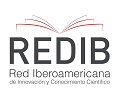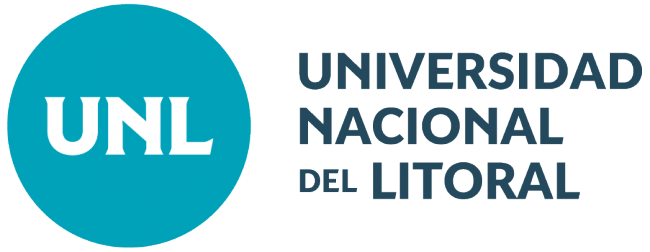Incidence of cutoff frequency in nutritional parameters of alfalfa (Medicago sativa L.) of different degrees of winter rest
DOI:
https://doi.org/10.14409/favecv.v20i1.10110Keywords:
alfalfa, cultivate, nutritional parameters, cutting frequencyAbstract
The objective of this work was to evaluate the nutritional quality in 3 cultivars of alfalfa, belonging to different winter dormancy (GRI), subjected to two cutting frequencies during one year of cultivation, based on the abundant information existing in studies carried out in productivity, coverage and persistence, not so in the determination of quality of forage subjected to different frequencies of cuts and contrasting GRI. Three cultivars (GR6-Verzy), (GR9-Mecha) and (GR10-Ruano) were tested. The experimental design was a complete split plot with four repetitions. Two treatments defined by the cutting intervals were established: T1: 25 days and T2: 35 days. These were specified for spring, summer and fall seasons. For winter the interval was 45 and 55 days in T1 and T2, respectively. The evaluated variables were: percentage of dry matter (% DM), percentage of crude protein (% PB), percentage of neutral detergent fiber (% FDN) and percentage of acid detergent fiber (% FDA). Significant differences were found for all the nutritional variables studied, for both treatment with p <0.05 with InfoStat program. Interaction between cultivars and treatment was observed for % PB. The 35 days cutoff frequency of yielded the lowest percentages of PB and the highest percentages of FDN and FDA. Hence the forage resulting from this frequency is of a lower quality, leading to decreased digestibility and lower performance of pasture for livestock.
References
AOAC. 1990. Official Methods of analysis of the AOAC, 14th ed. AOAC Intl., Washington, DC. 2200 pp.
Aufrère J, Graviou D, Baumont R, Detour A, Demarquilly C. 2000. Degradation in the rumen of proteins from fresh lucerne forage in various stages of growth and conserved as silage or hay. Ann. Zootech. 49: 461-474.
Ball D, Collins M, Lacefield G, Martin N, Mertens D, Olson K, Putman D, Undersander D, Wolf M. 2001. Understanding Forage Quality. American Farm Bureau Federation Publication 1-01, Park Ridge, IL.
Basigalup DH, Rossanigo R, Ballario MV. 2007. Panorama actual de la alfalfa en la Argentina. En: Basigalup D H (Ed.). El cultivo de alfalfa en la Argentina. EEA Manfredi-INTA. Pp. 3-25.
Cassida KA, Griffin TS, Rodríguez J, Patching SC, Hesterman OB, Rust SR. 2000. Protein degradability and forage quality in maturing alfalfa, red clover, and birdsfoot trefoil. Crop Science 40: 209-215.
Chen J, Tang F, Zhu R, Gao C, Di G, Zhang Y. 2012. Effects of cutting frequency on alfalfa yield and yield components in Songnen Plain, Northeast China. African J. Biotechnol. 11: 4782-4790.
Colombatto D. 2020. Análisis de alimentos: Aplicaciones prácticas Departamento de Producción Animal, Facultad de Agronomía, Universidad de Buenos Aires. Av. San Martín 4453, C1417DSQ Buenos Aires, Argentina. (Material de enseñanza universitaria disponible en: https://www.agro.uba.ar/sites/default/files/catedras/resumencolombatto.pdf 09/03/2020.)
Di Rienzo JA, Casanoves F, Balzarini MG, Gonzalez L, Tablada M, Robledo C W. 2016. InfoStat versión 2016. Grupo InfoStat, FCA, Universidad Nacional de Córdoba, Argentina. (Software informático disponible en: https://www.infostat.com.ar/)
Fahey GC, Berger LL. 1988. Carbohydrate nutrition in ruminants. En DC Church (Ed.). The ruminant animal, digestive physiology and nutrition. Prentice-Hall, Englewood Cliffs. Pp:-69-297.
Goering HK, Van Soest PJ. 1970. Forage Fiber Analysis: Apparatus, Reagents, Pocedures and some Applications. USDA-ARS Agricultural Handbook 379, Washington DC. 24 pp.
Jaurena G, Wawrzkiewicz M. 2009. Guía de procedimientos analíticos. Programa para el mejoramiento de la evaluación de forrajes y alimentos - PROMEFA Centro de Investigación y Servicios en Nutrición Animal (CISNA) Departamento de Producción Animal Facultad de Agronomía – Universidad de Buenos Aires.
INIA La Estanzuela. 2000. Boletín de Divulgación N5 69. ®, INIA ISBN: 9974 -38 -109 -6 Editado por la Unidad de Difusión e Información Tecnológica del INIA. Montevideo- Uruguay.
INTA EEA Rafaela 2008. Tabla de Composición Química de Alimentos para Rumiantes. Gallardo, M, Romero, LA, Comerón, E. Compilado por Gaggiotti, M del C. CDD 636.086. Ediciones Instituto Nacional de Tecnología Agropecuaria. ISBN 978-987-521-305-0.
Mccoy TJ, Walker ET. 1984 Cytology and cytogenetics of alfalfa. En: Hanson AA, Barnes DK and Hill R (Eds.). Alfalfa and alfalfa improvement. Agronomy Monographs 29, Madison, USA. Pp. 737-776.
Mieres JM, Rebuffo M, Risso DF, Restaino E. 2000. (Eds) Tecnología en allfalfa. CALIDAD DE FORRAJE. p.145-152. Programa Plantas Forrajeras, INIA La Estanzuela.. Boletín de Divulgación N 69. ® 2000, INIA ISBN: 9974 -38 -109 -6 Editado por la Unidad de Difusión e Información Tecnológica del INIA. Andes 1365, Piso 12. Montevideo- Uruguay.
Montoya Buenrostro E. 2011. Variación en el contenido de nutrientes en alfalfa (Medicago sativa) cosechada a diferente edad de rebrote y época del año. (Tesis de maestría). Universidad Autónoma de Baja California, Instituto de Ciencias Agrícolas.
Nelson CJ, Moser LE. 1994. Plant factors affecting forage quality in Forage Quality, Evaluation, and Utilization. Based on the National Conference on Forage Quality, Evaluation, and Utilization held at the University of Nebraska, Lincoln, on 13-15 April 1994. Chapter 3: 115-154.
Ordoñez VN, Nescier I de los M, Dovis VL, Gieco JO, Bonvin C, Ribero G G, Walker G. 2019. Productividad y cobertura de cultivares de alfalfa (Medicago sativa L.) de diferentes grados de reposo invernal bajo dos frecuencias de corte. FAVE Sección Ciencias Agrarias 18: 8-15.
Panigatti J. 2010. 200 años, 200 suelos. Buenos Aires: INTA.
Quiñoñez AG, Dalla Fontana LA, Mollo, AJ. 2003. Respuesta de la alfalfa al agregado de fósforo, boro y calcio. FAVE Sección Ciencias Agrarias 2: 47-54.
Romero NA, Comeron E, Ustarroz E. 1995. Crecimiento y utilización de la alfalfa. En: Hijano E and Navarro A (Eds.). La Alfalfa en la Argentina. INTA C. R. Cuyo. Ed. Editar, San Juan. Pp. 151-170.
Rossanigo R, Spada M, Bruno O. 1995. Evaluación de cultivares de alfalfa y panorama varietal en la Argentina. En: Hijano E y Navarro A. Cap. 4. La alfalfa en la Argentina. Buenos Aires: INTA C.R. Cuyo. Pp 63-78.
Van Soest JP, Wine RH. 1967. Use of detergents in analysis of fibrous feeds IV. Determination of plant cell wall constituents. J. of the A.O.A.C. 50:55.
Van Soest JP. 1994. Nutritional ecology of the ruminant. 2º Ed. Cornell University Press, New York. 476 pp.
Ventroni LM, Jeffrey JV, Volenec JJ, Cangiano CA. 2010. Fall dormancy and cutting frequency impact on alfalfa yield and yield components. Field Crop Res. 119: 252-259.
Downloads
Published
How to Cite
Issue
Section
License
FAVE Sección Ciencias Veterinarias ratifies the open access model, in which contents (in full) are available free to anyone in the internet. The costs of production and publication are not transfered to the authors. This policy intends to break social and economical barriers that generate inequities in the access to information, and for the publication of research results.
All articles can be accessed at http://bibliotecavirtual.unl.edu.ar/publicaciones/index.php/FAVEveterinaria/issue/current/, under license Creative CommonsAtribución-NoComercial-Compartir Igual 4.0 Internacional.










